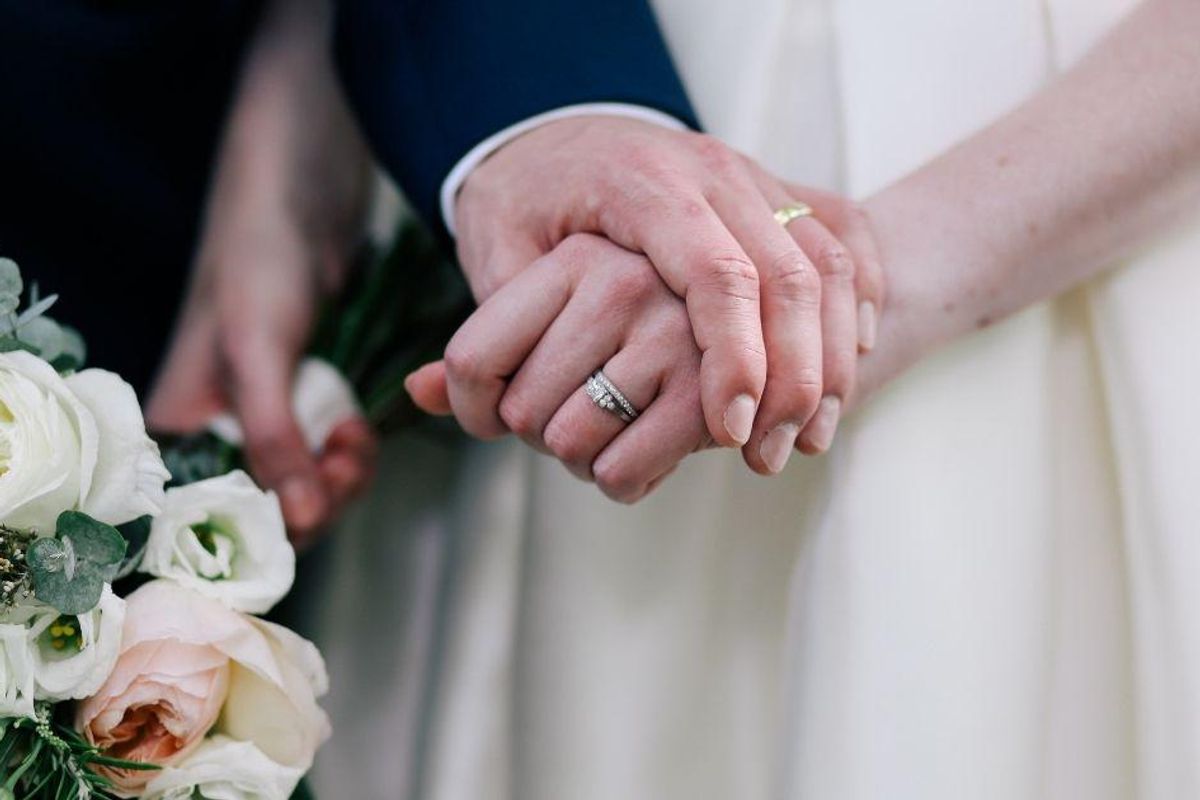
The other day I read an anonymous article written by a woman who had been raped repeatedly by her husband during their marriage. As terrible as the story was, the comments on the social media share of it were worse.
I was appalled to read comment after comment of women saying their spouses or long-time partners regularly forced or coerced them into sex. Many of those men basically claimed ownership of their partners' bodies, believing they were entitled to sex whenever they wanted it. Some pushed ahead even after she had explicitly said no or begged him not to. Some women would wake up in the middle of being raped by the person who was supposed to love, honor, and cherish them. Sadly, some women thought this was normal.
Too many people seem to think saying "I do"—or saying yes to sex more than once—equals a blanket consent for sex whenever. News flash: It does not.
There is no such thing as blanket consent for sex. It doesn't matter if you're in a committed relationship. It doesn't matter how long you've been together. It doesn't matter if you've said yes a hundred times in a row. If you don't want to have sex, you don't have to. Period.
Particularly disconcerting were the women who said they and/or their husbands were taught by their churches or religions that they had to submit whenever their husbands wanted sex. That it was their "duty" to please their husbands and that they couldn't "deny" them. That they didn't have ownership over their own body at all.
Others talked about how their partner would guilt them into sex, saying they "needed it" or "couldn't help themselves." How they would gaslight them or threaten to go get it elsewhere if they didn't relent.
Comment after comment. Story after story, some describing outright abuse and others describing incredibly unhealthy dynamics surrounding sex and consent within the relationship.
I was horrified to read these stories—but even more horrified by the statistics that back them up. According to the National Resource Center on Domestic Violence, between 10 and 14 percent of married women in the U.S. are raped by their husbands, and one-third of women report "having unwanted sex" with their partner. However, spousal rape also goes largely unreported.
Perhaps it shouldn't be so surprising. After all, up until 1975, every state's rape laws had an exemption for marriage, so legally speaking, married women (or men) couldn't be raped by their spouses. Thanks to pressure from the women's rights movement, all states changed their laws to acknowledge marital rape by 1993. But culture often takes longer to change than laws, and there are still far too many people who don't understand that consent is the standard for everyone in every sexual encounter, regardless of relationship status.
While consent is straightforward, the dynamics of sex are unique to each relationship. In a loving, long-term relationship, sex can be a bit of a complex dance. Different people have different desires, intimacy means different things to different people, and life circumstances (babies, health issues, etc.) can impact a couple's sexual activity. Each couple has to work out the hows and whens and how oftens of their sex life, but it should always be a mutual thing. A sexual relationship requires ongoing communication, and sometimes negotiations of sorts are necessary to make sure each partner feels heard and respected in their wants and desires.
The key is respect. There's a world of difference between saying to your partner "I feel like our relationship needs more physical intimacy," and saying "You need to be ready and raring to go whenever I'm feeling feel frisky." The former is a conversation starter that can ultimately lead to greater connection and a stronger relationship. The latter is just a terrible attitude to take toward your loved one.
Some might say "enthusiastic consent" is necessary, but as someone who's been in a healthy, happy marriage for 23 years, I'd say that's not always reality. There may be times when one partner isn't super into it at first, but they know they will be once they get started, so they say yes because they want to make their partner happy. (Not because their partner pressured them, but because they genuinely want to.) But consent to even head down the road to funkytown always needs to be there in the first place. Always. Every time.
No one should be made to feel like they're a bad partner for saying no when they aren't up for sex. No one should be pushed or pressured into it. No one should be demanding sex or taking it when it hasn't been freely offered. Why would you even want to have sex with someone who actively doesn't want to anyway?
No means no. "Stop" means no. Being asleep means no. Yes means yes. It's really that simple.
I hope both women and men read this and recognize that anything short of that standard of consent is not okay. Everyone deserves a partner who respects their bodily autonomy and understands that sex is a mutually agreed-upon activity—every time, in every relationship.
- Don't know what consent is? Let this animation of a cup of tea clear it ... ›
- This third grade teacher's classroom lessons on consent are ... ›
- 5 everyday ways to teach your kids about consent. - Upworthy ›
- Woman shares the stories of the men who didn't rape her - Upworthy ›
- Things that have nothing to do with rape perfectly illustrate the concept of consent. - Upworthy ›
- Things that have nothing to do with rape perfectly illustrate the concept of consent. - Upworthy ›
- Mom uses body language to teach son about consent - Upworthy ›

